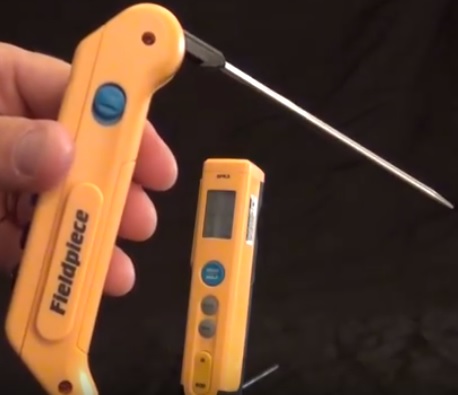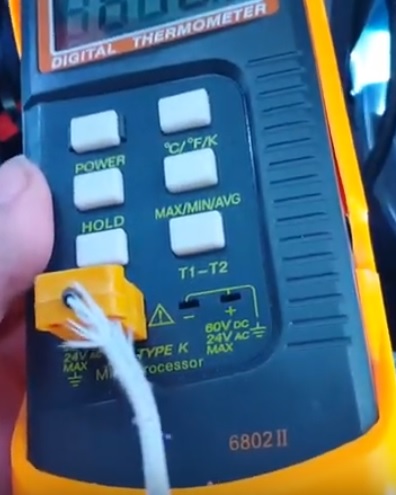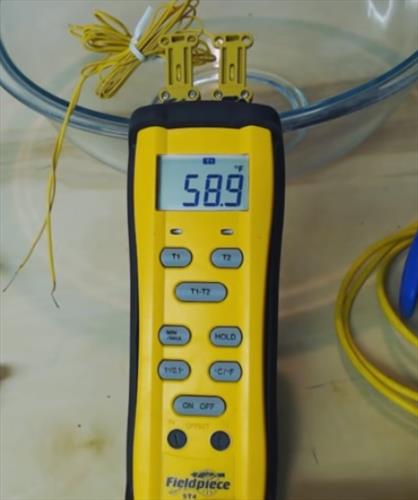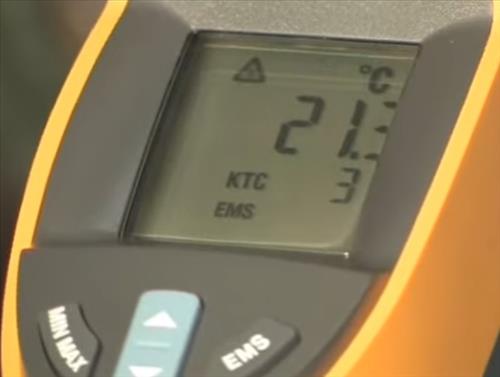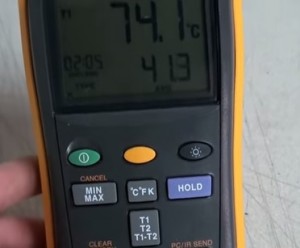
Taking temperature readings is part of an HVAC technician’s job, from reading air differences at the supply and return to reading super-heat and sub-cooling.
What Makes for a Good HVAC Thermometer?
The best thermometer to use in HVAC will depend on what is being worked on.
For example, pocket thermometers are a great tool to carry around and get general readings, such as checking your Delta-T, comfort calls, outside air temp, etc.
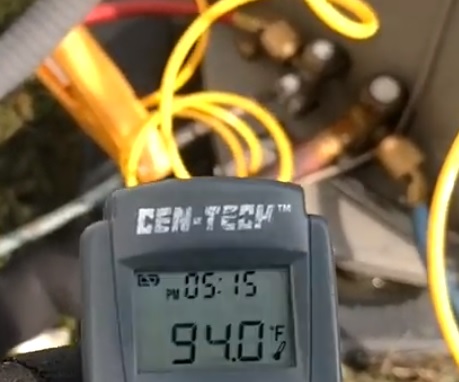
They do have some degree of error but give a general reading that can point you in the right direction.
Infrared thermometers are good in theory but don’t live up to the hype that surrounds them. This may change from brand-to-brand as to accuracy.
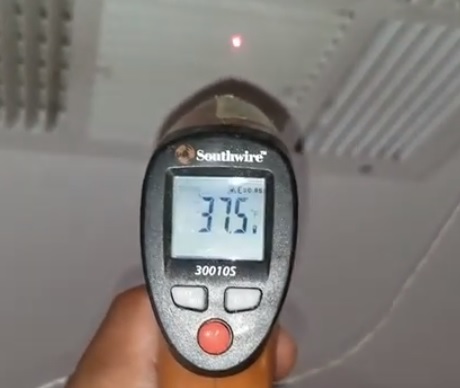
An infrared thermometer can give a general reading and are good in some cases.
For example, a Return Air that is high up can get a quick general reading with an infrared thermometer without having to get a ladder.
Infrared thermometers don’t work well with copper lines that scatter the infrared sensor.
Again manufacturers may have some good ones out there (I haven’t tested them all), but in my experience, infrared is only good for getting generalized readings.
The best, most accurate reading you can get is with a digital HVAC thermometer.
The leads built into many HVAC meters, such as Fieldpiece HS33, are good multi-purpose temperature measuring equipment.
Dedicated digital thermometers with sensor probes are also a good tool to use.
Last but not least is the durability of the thermometer, which must hold up to all kinds of abuse that HVAC technicians will put it through.
Each tool has its place, and often 2-3 types of thermometers are used depending on the situation.
There are many good HVAC thermometers available, with some of our favorite picks below.
As always, be sure to read reviews on Amazon, forums, or elsewhere to be sure a unit is a good fit for you.
*This post contains affiliate links.
Our Picks for Best HVAC Thermometers
- Fieldpiece SPK2
- Bestdo 6802
- Fieldpiece ST4
- Fluke 561
- REED Instruments SD-947
Fieldpiece makes the SPK2 sturdy pocket thermometer for HVAC with a probe that bends to fit into a pocket. It is a little too heavy for a shirt pocket but slides easily into a pant pocket.
It has a magnet that attaches to duct-work that comes in handy, along with a display that lights up when needed.
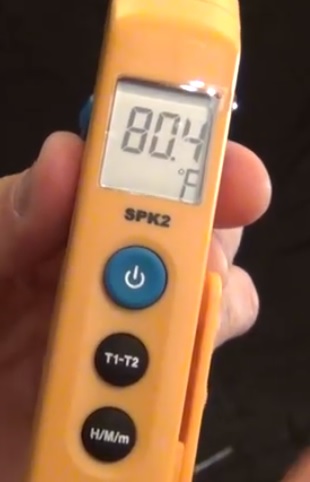
It takes around a minute for it to get a good reading but it is a good low-cost reliable unit that works.
This is a good thermometer to get quick general temperature readings.
The Bestdo 6802 is a digital thermometer that comes with sensor probes to get accurate readings.
It is a budget unit that is built more for home use or the part-time HVAC tech and works well enough for basic use.
The Fieldpiece ST4 is a very good digital thermometer.
It is built for a professional HVAC tech who will be using a thermometer a lot.
The unit comes with many attachments such as clamps, one for the suction line and one for the liquid.
The Fluke 561 HVAC Pro is an Infrared Thermometer made for the professional.
If you are looking to get temperature readings at a distance, this is a good one to have.
It is a good unit to see what the temperature is coming out of vents up high or low without having to get a ladder out or constantly be kneeling down.
The REED SD-947 is another professional HVAC thermometer with many nice features.
It has a temperature range from -148 to 2372 Fahrenheit and is very accurate at +/-0.4%.
The display can show up to four temperature results at the same time which comes in handy in a variety of scenarios.
A very nice feature is the real-time data logger in which the data is held on an SD card and can be taken out, saved, and copied.
Best HVAC Thermometers Comparison Chart
| Name | Temperature Range | Accuracy | Type |
|---|---|---|---|
| Fieldpiece SPK2 | -58°F to 2000°F | ±1.8°F | Professional |
| Bestdo 3 | -58°F~1022°F | ±2.5°F | Budget |
| Fieldpiece ST4 | -58°F~2000°F | ±1.7°F | Professional |
| Fluke 561 | -40°F to +1022°F | ±1°F | Professional |
| REED SD-947 | -148°F to 2372°F | +/-0.4% | Professional |
About HVAC Thermometers
Temperature measuring instruments measure the temperature of vapors, liquids, and solids. Air, water, and refrigerant in copper lines are the common substances measured for temperature level regardless of the medium to be measured; the methods for checking the accuracy of the instruments are similar.
Refrigeration technicians must have thermometers that are accurate from -50°F 50°F to measure the refrigeration lines and the inside coolers higher temperatures are experienced when measuring ambient temperatures, such as when the operating pressures for the condenser are being examined heating, and air conditioning technicians must measure air temperatures from 40°F 250°F and water temperatures as high as 220°F for normal service.
This can require a wide range of instruments for temperatures above 250°F; for example, flue gas analysis in the gas and oil-burning equipment, special thermometers are used.
In the past, most technicians relied on the glass then Mercury or alcohol thermometers.
New electronic digital thermometers are used now and give the most accurate reading.
Digital thermometers are simple, economical, and good at taking measurements; although the digital instrument costs more, they can retain accuracy for longer times.
Pocket-type thermometers are often used in a pinch for taking quick measurements but are not as accurate as sensor probes built into digital.
Accuracy is more important the lower temperature goes. When small temperature differences are measured, 1°F air does not sound like much until you have one degree that is off plus or -1°F and tries to take an accurate temperature drop across the water heat exchange that only has a drop of 10°F. You will have a Built-in 20% degree of error.
